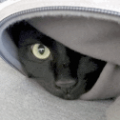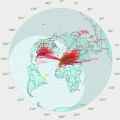WA2ZKD
About
- Username
- WA2ZKD
- Joined
- Visits
- 16,165
- Last Active
- Roles
- Member
- Points
- 14
-
Multiple Kiwis, single GPS antenna?
-
Measuring the AM Modulation in the AM and AMN Mode
- combined with a virtual audio cable something like https://www.qsl.net/dl4yhf/spectra1.html provides a lot of tool.
- https://www.audacityteam.org/ is another good tool
- and of course there's something better that I can't think of!! :-)
- combined with a virtual audio cable something like https://www.qsl.net/dl4yhf/spectra1.html provides a lot of tool.
-
kiwi cluster
-
kiwi cluster
Project is done mechanically, just needed to update the firmware in everything, configure and hook up antennas.
Pix may be viewed at https://www.dropbox.com/sh/x7tt18loi84bpg3/AADLeN3iU6g7ZoPi520opbQpa?dl=0 -
Alternate cooling method
-
kiwi cluster
Since I've found an adequate cooling scheme, see: http://forum.kiwisdr.com/discussion/1939/alternate-cooling-method#latest
I have gone on to finalize my "kiwi cluster", 4ea BBAI based units combined with a common fan.
I went this route to reduce fan noise. The box on the back is a plenum for a single 90 X 90 mm AC fan. I used a best quality ball bearing fan.
Initially (see other thread) I had some ducting in the inlet side of the kiwi enclosure. I found today that was no longer needed, I stay below 44C, only 19 deg above room ambient.
Some of you may say "wow, that's a lot of dollars"... I can duplicate that for $1400 or $25/channel (there's the potential for 56 channels there). Better performance and less money that dongles!! -
Alternate cooling method
-
Alternate cooling method
-
Alternate cooling method
-
Alternate cooling method







